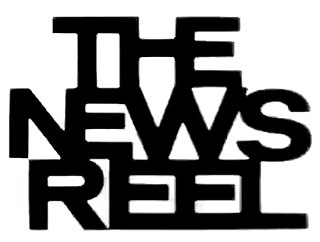Related Research Articles

Newsreel footage of the 6 May 1937 Hindenburg disaster, where the zeppelin LZ 129 Hindenburg crashed and burned down, was filmed by several companies.

Ian Richard Kyle Paisley, Baron Bannside, was a Northern Irish loyalist politician and Protestant religious leader who served as leader of the Democratic Unionist Party (DUP) from 1971 to 2008 and First Minister of Northern Ireland from 2007 to 2008.

A newsreel is a form of short documentary film, containing news stories and items of topical interest, that was prevalent between the 1910s and the mid 1970s. Typically presented in a cinema, newsreels were a source of current affairs, information, and entertainment for millions of moviegoers. Newsreels were typically exhibited preceding a feature film, but there were also dedicated newsreel theaters in many major cities in the 1930s and ’40s, and some large city cinemas also included a smaller theaterette where newsreels were screened continuously throughout the day.

A police riot is a riot carried out by the police; more specifically, it is a riot that police are responsible for instigating, escalating or sustaining as a violent confrontation. Police riots are often characterized by widespread police brutality, and they may be done for the purpose of political repression.
The Orangeburg massacre refers to the shooting of protesters by South Carolina Highway Patrol officers in Orangeburg, South Carolina, on the South Carolina State University campus on the evening of February 8, 1968. About 200 protesters had previously demonstrated against racial segregation at a local bowling alley. Three of the protesters, African-American males, were killed and 28 other protesters were injured.

The 1967 Hong Kong riots were large-scale anti-government riots that occurred in Hong Kong during British colonial rule. Beginning as a minor labour dispute, the demonstrations eventually escalated into protests against the British colonial government. The protests were also partially inspired by riots that had occurred just a few months prior in Portuguese Macau, known as the 12-3 incident, which were ultimately much more successful on the side of the protesters.

In the Memorial Day massacre of 1937, the Chicago Police Department shot and killed ten unarmed demonstrators in Chicago, on May 30, 1937. The incident took place during the Little Steel strike in the United States.

Republic Steel is an American steel manufacturer that was once the country's third largest steel producer. It was founded as the Republic Iron and Steel Company in Youngstown, Ohio in 1899. After rising to prominence during the early 20th Century, Republic suffered heavy economic losses and was eventually bought out before re-emerging in the early 2000s as a subsidiary. The company currently manufactures Special Bar Quality (SBQ) steel bars and employs around 2,000 people. It is currently owned by Grupo Simec, based in Guadalajara, Mexico.
Timeline of trade union history

The Novocherkassk massacre was a massacre which was committed against unarmed civilians who were rallying on 2 June 1962 in the Soviet city of Novocherkassk by the Soviet army and KGB officials. A few weeks prior to the massacre, workers at the Electro Locomotive Novocherkassk plant (NEVZ) had organized a peaceful labor strike which later resulted in bloodshed and the killing of about 26 people.

The protests of 1968 comprised a worldwide escalation of social conflicts, predominantly characterized by popular rebellions against state militaries and the bureaucracies.
Paramount News is the name on the newsreels produced by Paramount Pictures from 1927 to 1957.

A series of anti-government riots took place in Armenia following presidential elections held on 19 February 2008. Protests broke out in the Armenian capital Yerevan, organized by supporters of presidential candidate and former president Levon Ter-Petrosyan and other opposition leaders.
South Africa has been dubbed "the protest capital of the world", with one of the highest rates of public protests in the world.
The 10th anniversary of the 1989 Tiananmen Square protests and massacre (10周年六四遊行) was a series of rallies – street marches, parades, and candlelight vigils – that took place in late May to early June 1999 to commemorate the 10th anniversary of 4 June 1989 Tiananmen Square protests and massacre. The anniversary of the event, during which the Chinese government sent troops to suppress pro-democracy movement and many people are thought to have perished, is remembered around the world in public open spaces and in front of many Chinese embassies in Western countries. On Chinese soil, any mention of the event is completely taboo in Mainland China; events which mark it only take place in Hong Kong, and in Macao to a much lesser extent.

The Little Steel strike was a 1937 labor strike by the Congress of Industrial Organizations (CIO) and its branch the Steel Workers Organizing Committee (SWOC), against a number of smaller steel producing companies, principally Republic Steel, Inland Steel, and Youngstown Sheet and Tube Company. The strike affected a total of thirty different mills belonging to the three companies, which employed 80,000 workers. The strike, which was one of the most violent labor disputes of the 1930s, ended without the strikers achieving their principal goal, recognition by the companies of the union as the bargaining agent for the workers.
The following events occurred in May 1937:

The Newsreel, most frequently called Newsreel, was an American filmmaking collective founded in New York City in late 1967. In keeping with the radical student/youth, antiwar and Black power movements of the time, the group explicitly described its purpose as using "films and other propaganda in aiding the revolutionary movement." The organization quickly established other chapters in San Francisco, Boston, Washington, DC, Atlanta, Detroit, Chicago, Los Angeles, Washington, DC and Puerto Rico, and soon claimed "150 full time activists in its 9 regional offices." Co-founder Robert Kramer called for "films that unnerve, that shake people's assumptions…[that] explode like grenades in people’s faces, or open minds like a good can opener." Their film's production logo was a flashing graphic of The Newsreel moving in and out violently in cadence with the staccato sounds of a machine gun. A contemporary issue of Film Quarterly described it as "the cinematic equivalent of Leroi Jones's line 'I want poems that can shoot bullets.'" The films produced by Newsreel soon became regular viewing at leftwing political gatherings during the late 1960s and early 1970s, seen in parks, church basements, on the walls of buildings, in union halls, even at Woodstock." This history has been largely ignored by film and academic historians causing the academic Nathan Rosenberger to remark: "it is curious that Newsreel only occasionally shows up in historical studies of the decade."
References
- ↑ Memorial Day Massacre of 1937 Archived 2008-05-13 at the Wayback Machine at the Illinois Labor History Society Archived 2007-09-27 at the Wayback Machine
- ↑ "Chicago Police Censor to Ban Films of Riot from Theatres There". Daily Boston Globe. 3 July 1937.
- ↑ "Attack on Pickets by Chicago Police Reported in Film". Christian Science Monitor. 17 June 1937.
- ↑ Quirke, Carol (2008). "Reframing Chicago's Memorial Day Massacre, May 30, 1937". American Quarterly. 60 (1): 129–157. doi:10.1353/aq.2008.0009. ISSN 0003-0678. JSTOR 40068502. S2CID 144193808.